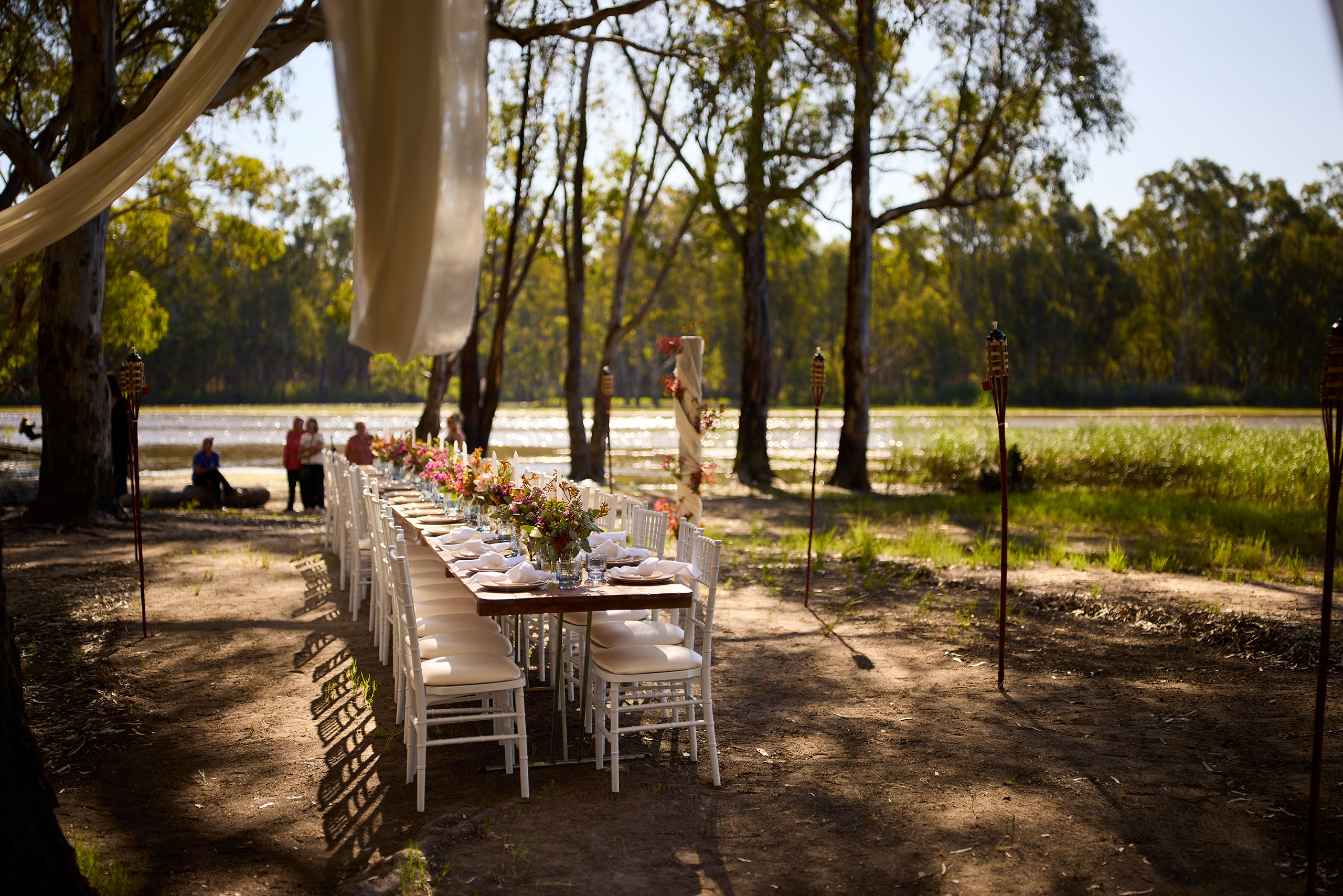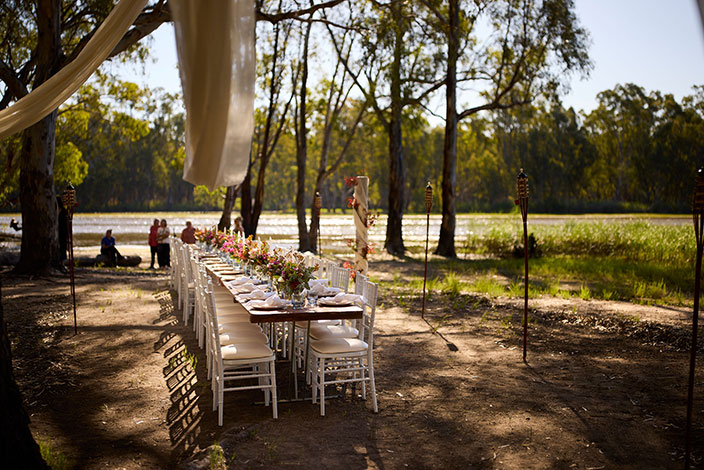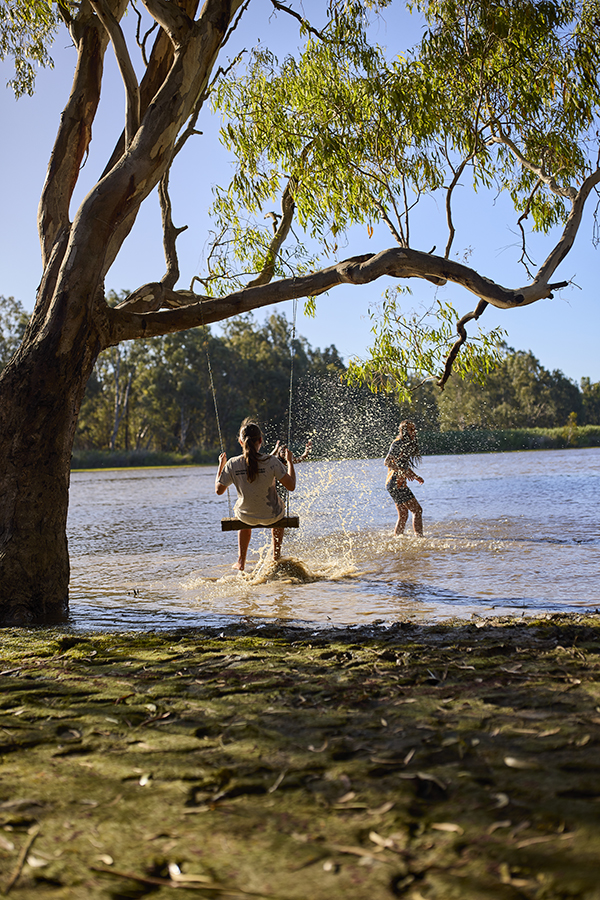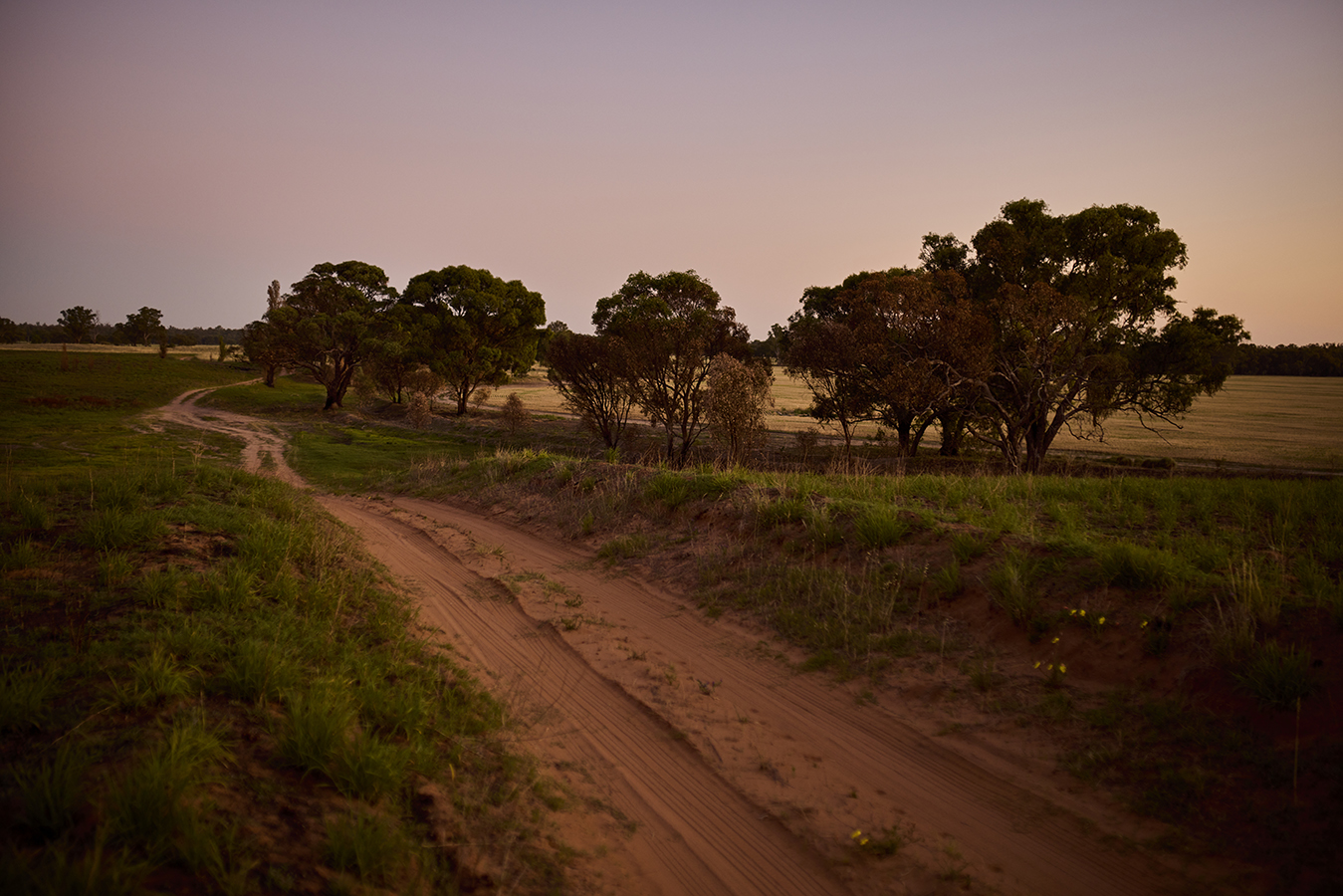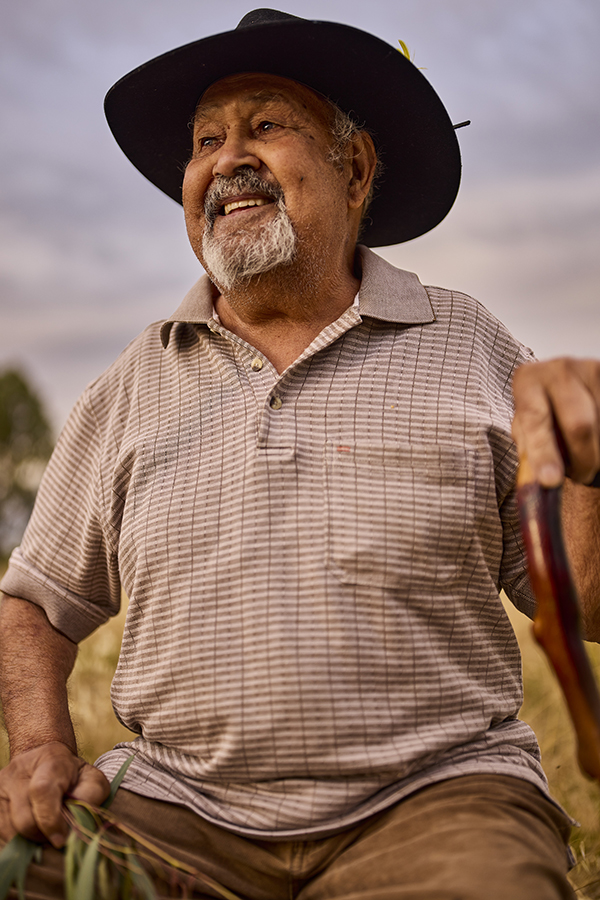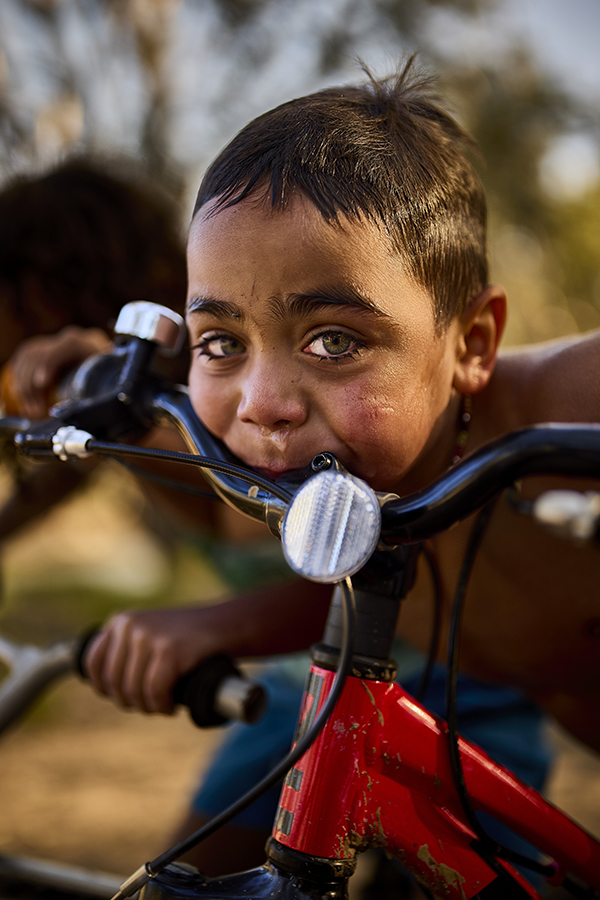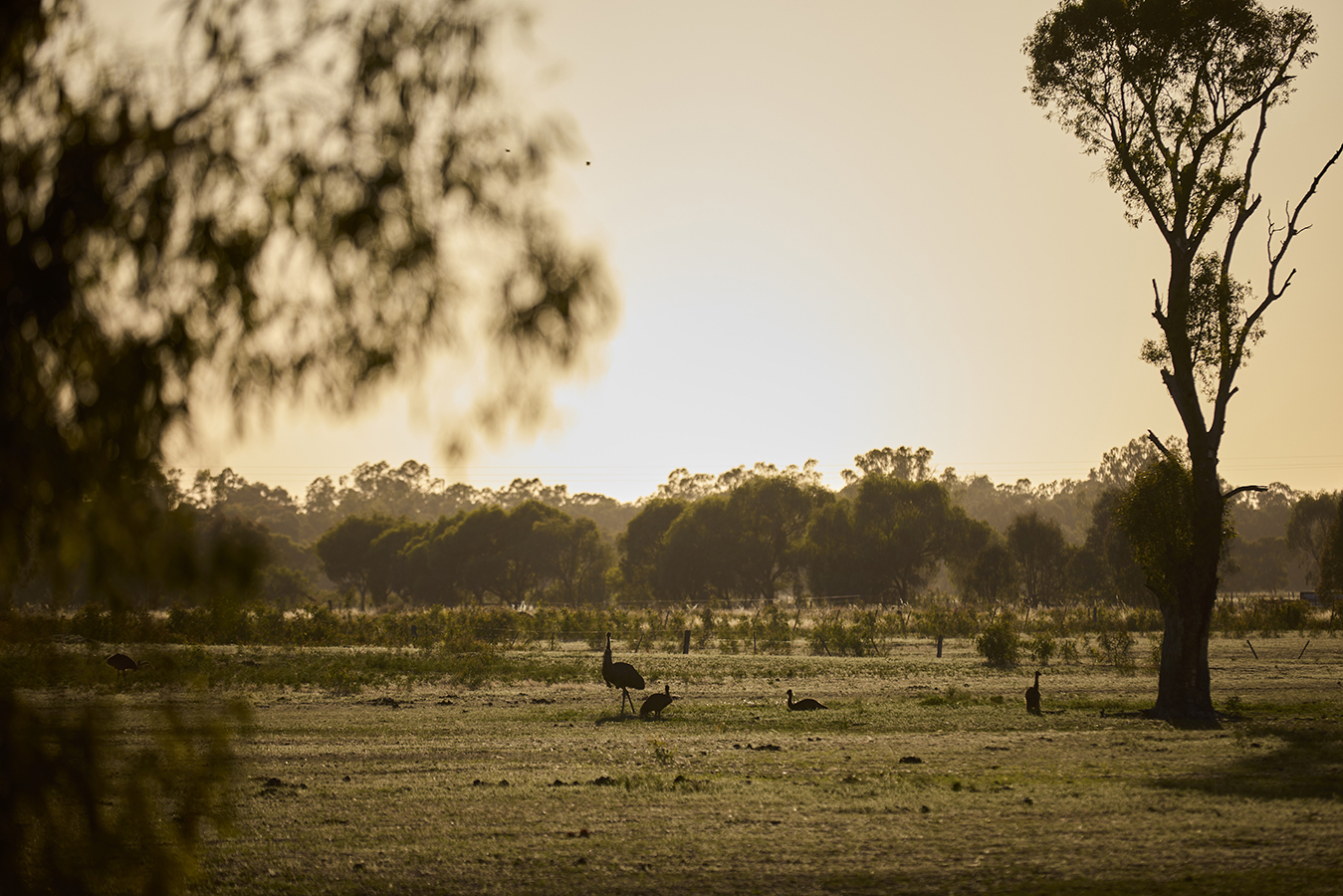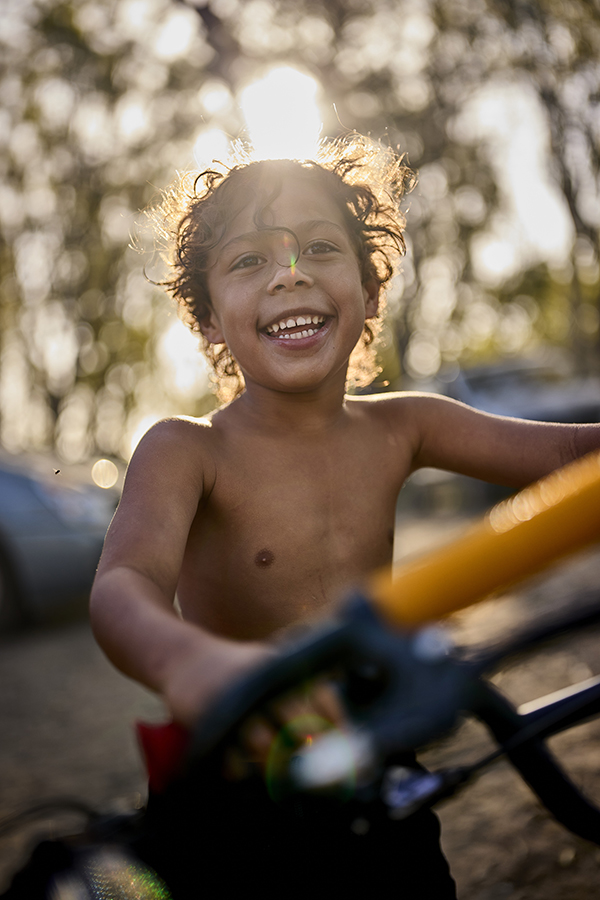Holding Space demonstrates design excellence through its thoughtful integration of cultural integrity, emotional resonance and sensory experience. Every element of the exhibition was intentionally designed to honour the stories of Elders and reflect the feeling of being on Country. It satisfies all the hallmarks of good design, balancing functionality, accessibility, beauty and care.
The layout was intuitive and inclusive. Visitors moved through the space in a gentle sequence that mirrored the experience of listening and learning in community. The exhibition began with portraiture, followed by the film, and ended in a sensory room for reflection. The space was wheelchair accessible and free to enter. Furniture was soft, rounded and arranged to welcome rest. Lighting shifted with time of day, echoing the natural rhythms of Barmah Forest.
The aesthetics were intentionally grounded. Images were printed on translucent fabric, moving gently with airflow to evoke trees on Country. Soundscapes of birdsong, wind and water paired with native botanicals created a sensory memory that stayed with visitors long after they left. The design placed equal value on emotional impact, cultural safety and spatial beauty.
Holding Space also prioritised sustainability, using hired or borrowed furniture, locally grown flowers and materials that could return to community. The work was never decorative. It was functional, culturally guided and deeply respectful of the people and places it represented.
The user experience was central. Over 1000 people visited, including Elders, young people, designers, architects and passersby. Many returned with family or colleagues. More than 100 letters were written to Country, demonstrating the emotional power of the work.
Holding Space sets a new benchmark for what it means to design with Country. It shows that professional design, when led by community and shaped by care, can transform systems and create lasting connection. It speaks locally, but resonates globally.

